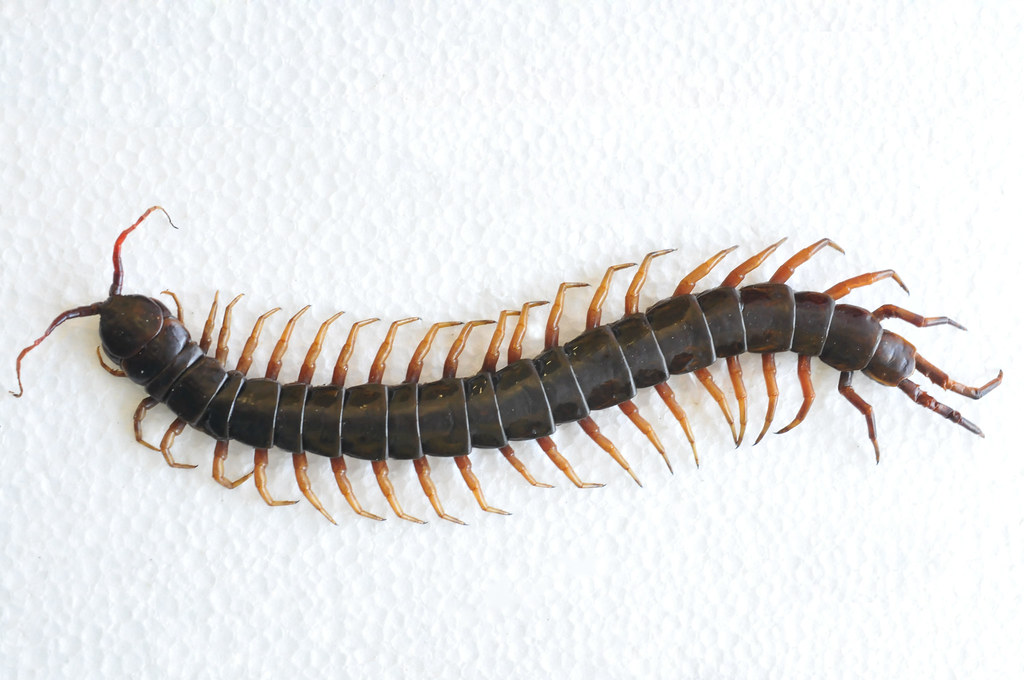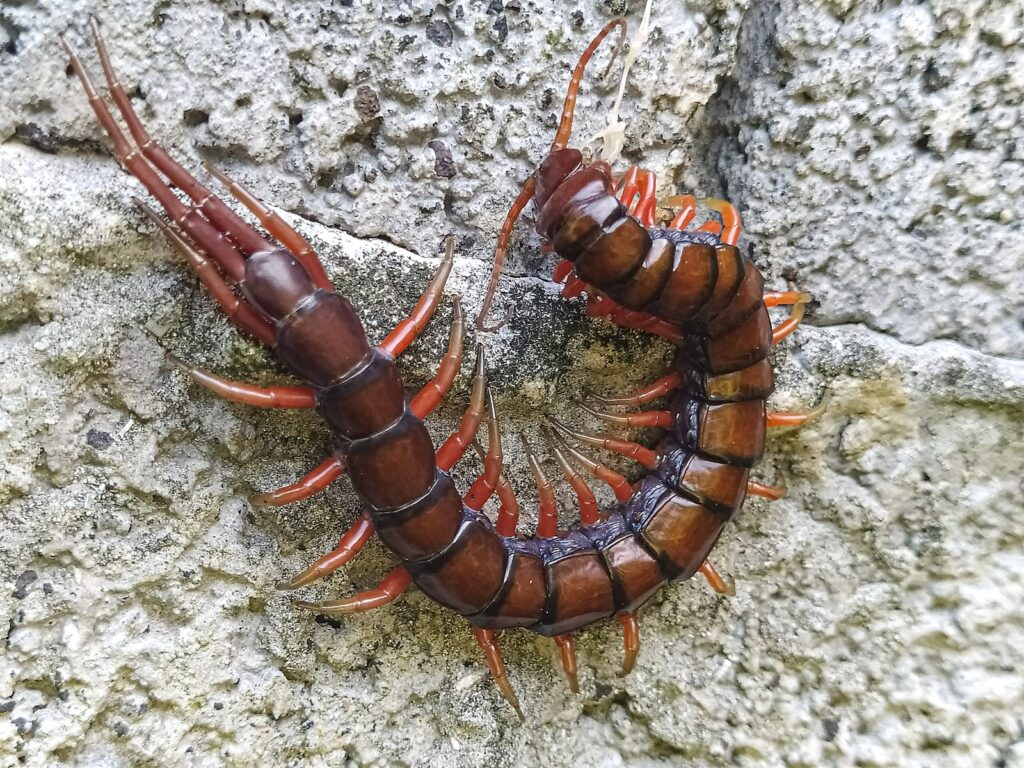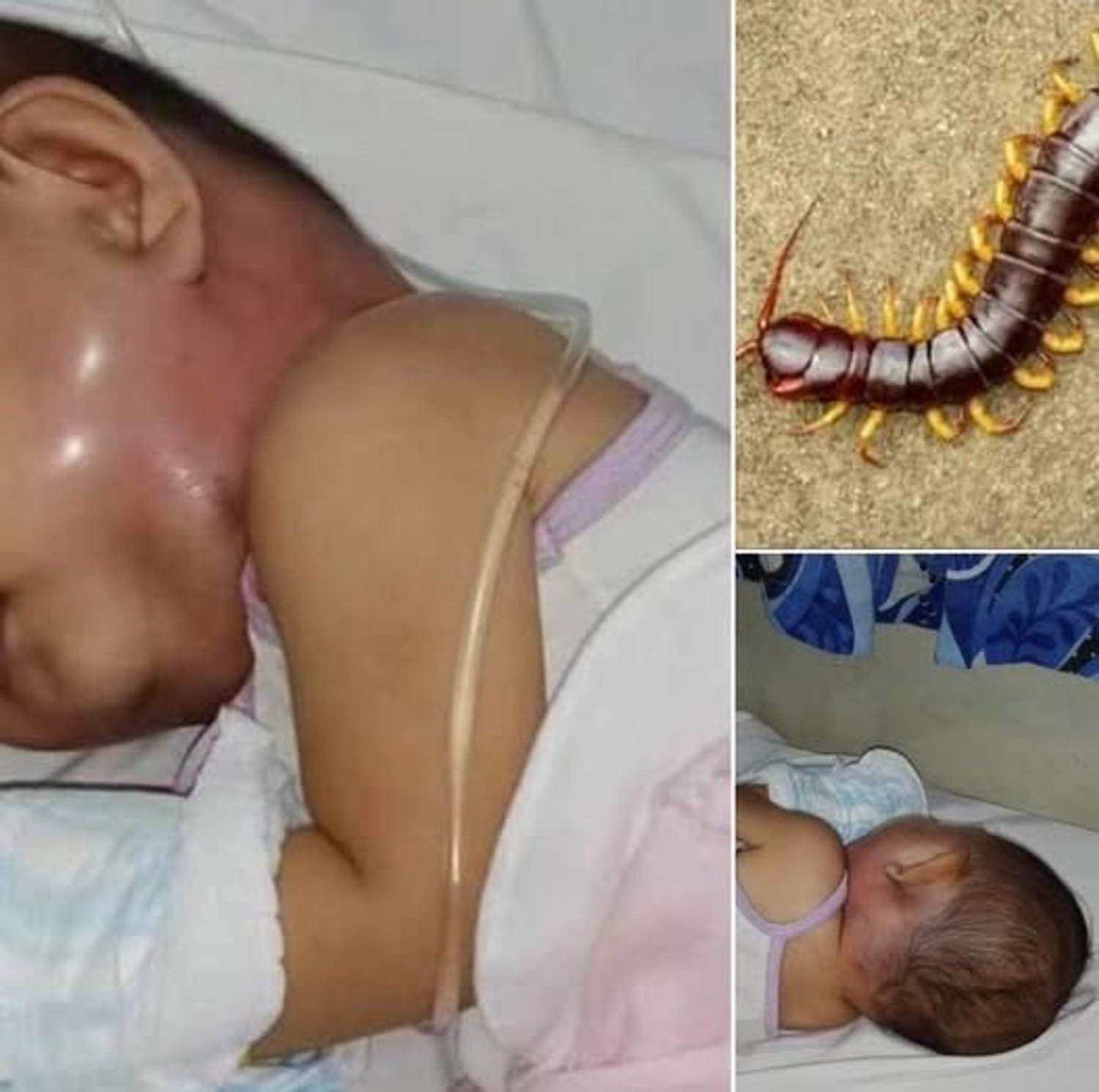What Makes Centipedes Unique?
Centipedes are fascinating creatures with distinct characteristics:

- Hundreds of Legs: Centipedes can have anywhere from 15 to 77 pairs of legs, which grow as they molt. They use these legs to scurry quickly and climb walls.
- Venomous Bites: Although centipedes have venom glands, their bites are generally harmless to humans, causing only mild soreness or redness.
- Ancient Survivors: With a history dating back over 400 million years, centipedes are one of Earth’s oldest animals.
- Fast and Agile: Centipedes can cover over a foot of ground in less than a second, thanks to their segmented bodies and waxy exoskeleton.
- Longevity: Certain species, like the house centipede, can live for up to six years.
Why You Should Never Kill a House Centipede
While house centipedes might seem creepy, they actually help by preying on harmful pests like cockroaches, spiders, and moths. They don’t build nests or webs, so they won’t establish colonies like other pests.
However, a centipede infestation can signal a larger pest problem. These creatures thrive in damp, dark spaces and often enter homes in search of food. If you see many centipedes, it may indicate the presence of other pests they’re feeding on, like roaches or spiders.
Natural Predators of Centipedes
Centipedes are part of the food chain and are preyed upon by birds, spiders, frogs, mice, beetles, and snakes. Larger centipedes even prey on smaller animals, including frogs and spiders.
How to Handle a Centipede Infestation
Instead of killing centipedes, take these steps to manage them effectively:
- Reduce Moisture: Centipedes thrive in damp environments. Fix leaks, use dehumidifiers, and ensure proper ventilation.
- Seal Entry Points: Block cracks and crevices around doors, windows, and walls to prevent them from entering your home.
- Declutter: Remove clutter in basements, attics, and closets to eliminate hiding spots.
- Pest Control: Since centipedes feed on other pests, eliminating their food source can naturally reduce their population.
Why Professional Centipede Control is the Best Option
While DIY solutions can help, professional pest control offers long-term protection. Experts can identify the root cause of a centipede infestation, eliminate it effectively, and prevent future problems.


